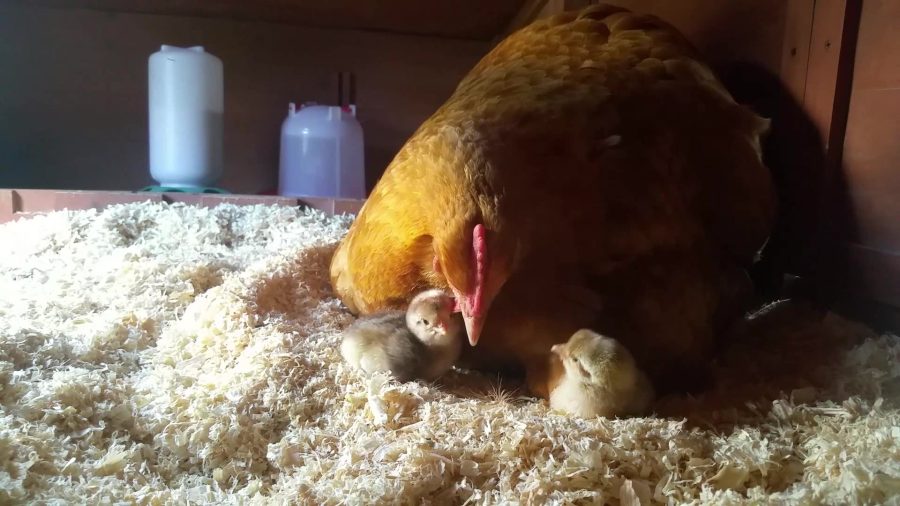With a New Year on the horizon, you may be thinking about keeping chickens for the first time or even moving from egg-layers to a utility breed. Fiona and Hugh Osborne explain why they believe that the Buff Orpington is the ideal choice for any smallholder looking to support their self-sufficient life.
If you’re looking for a chicken that will provide both eggs and meat (a utility breed), size matters. There is no point in breeding your chickens with the goal of putting meat on the table, only to find that the chicken that you harvest will only feed one person for one meal. Orpingtons won’t let you down in this department.
Adult hens weigh on average 2.7 – 3.6kg and males 3.6 – 4.6kg. Clearly the dressed-out weight is less but they will provide a substantial table weight. If you haven’t raised your own birds for meat before or if you have raised broiler birds, Orpingtons will be different to what you are used to. Modern broiler chickens that are purchased in the supermarket have been developed to have unnaturally large breast muscles. Orpingtons as a traditional breed have less breast muscle, but don’t let that put you off.
SELF-PERPETUATING
This is where the Orpington really shines. They are notoriously broody. For most chicken keepers who keep their hens for eggs this is a source of immense frustration. For a smallholder, or at least for us as smallholders, this has us jumpingfor joy! Here is a chicken that will not only provide us with eggs and meat but will also incubate, hatch and raise its own replacements. What could possibly be better than that?
Many smallholders using Orpingtons for breeding will use the natural instincts of the hens and let them deliver lots of chicks without any support. We take a slightly different route. We still have an incubator and a brooder plate. This is so that we can maximise the clutch size. We know our Orpington hens can easily support 12 chicks and could support up to 15. However, our hens can only safely incubate 12 eggs without eggs being unevenly kept warm and the risk of hatching chicks being fatally crushed by other eggs during the hatch process. Not every egg will result in a chick. There are infertile eggs and eggs that will not survive to hatch. Running an incubator in parallel allows us to incubate extra eggs and bring us back as close as possible to the golden number of chicks. The equipment also allows us to support any clutch in difficulty during incubation or hatching inside the incubator and any chick struggling after hatch can have some respite to recover under the brooder plate while the broody hen cares for the energetic chicks. If you prefer to let nature, take its course a clutch size of around 7 is reasonable and the Orpington broody hens will do an amazing job of caring for your chicks.
PLACID & FRIENDLY
Orpingtons are big, bumbling, curious and friendly birds. As a breed they are not aggressive and are more willing than others to want to spend time with you. As a smallholder, many of us take on this lifestyle to connect to the source of our food whether that is growing vegetables or ensuring that our livestock is raised to high welfare standards. The Orpington can go a step further by allowing a personal relationship between you and your flock. Let’s face it, no-one wants to be faced by an aggressive cockerel, or a group of hens that run away as soon as you are near. Orpingtons are a breed that are more likely to allow close contact than other chickens and this has to be a win, win for everyone.
This article extract was taken from the December 2023 edition of The Country Smallholder. To read the article in full, you can buy the issue here.
To receive regular copies of The Country Smallholder magazine featuring more articles like this, subscribe here.
For FREE updates from the world of smallholding, sign up for The Country Smallholder newsletter here.








